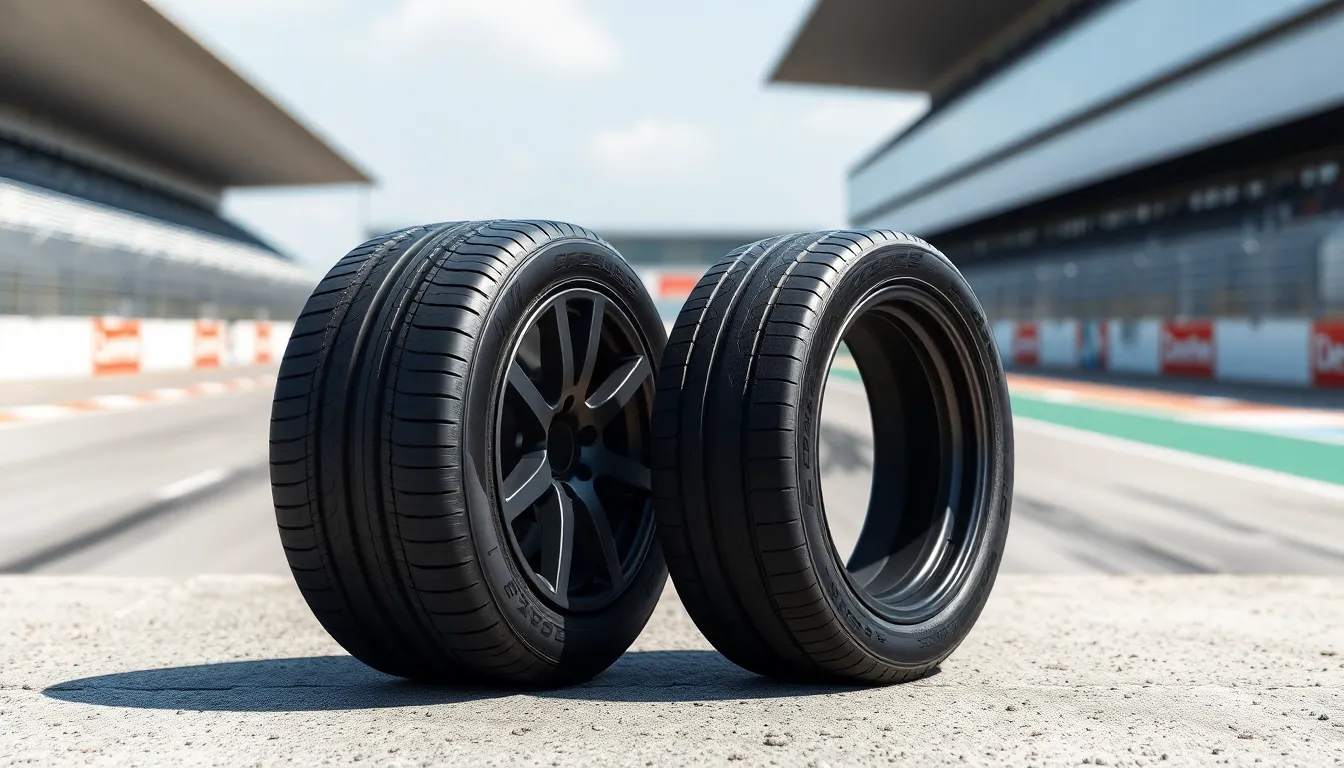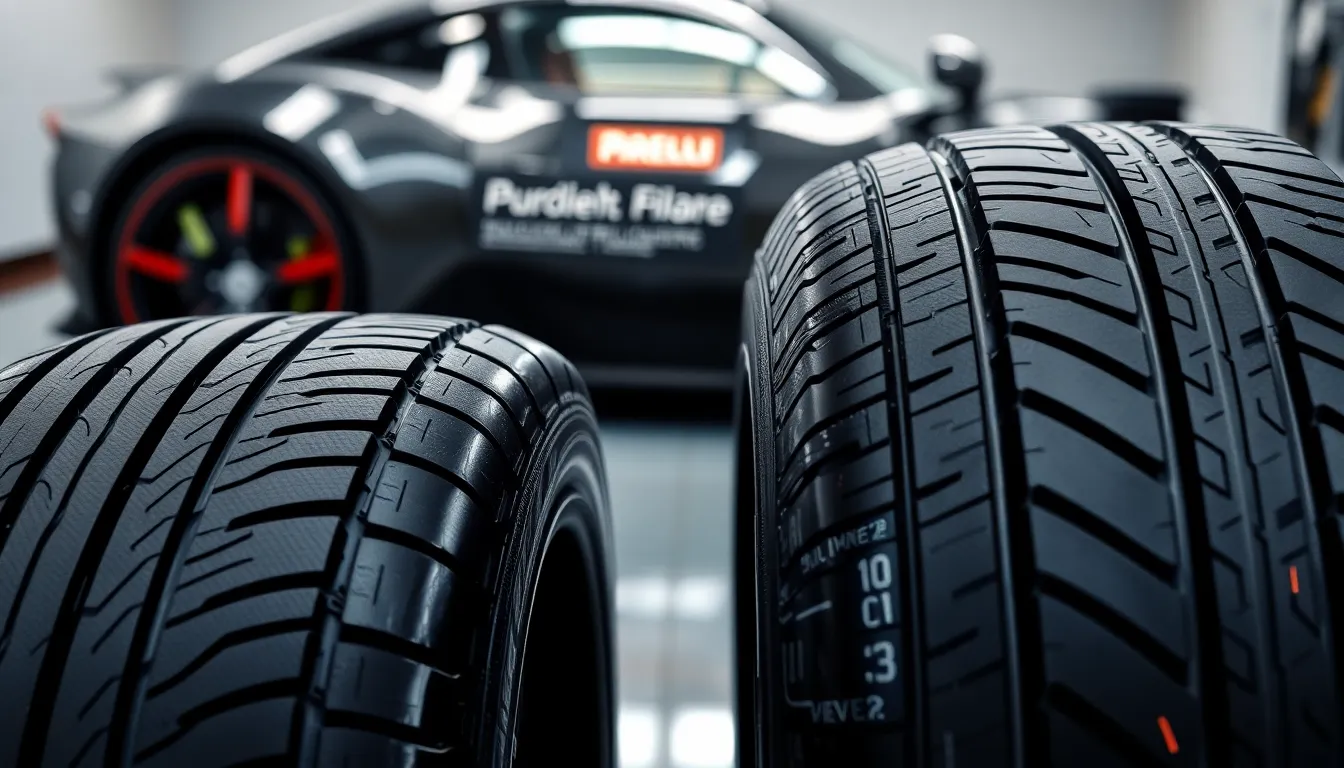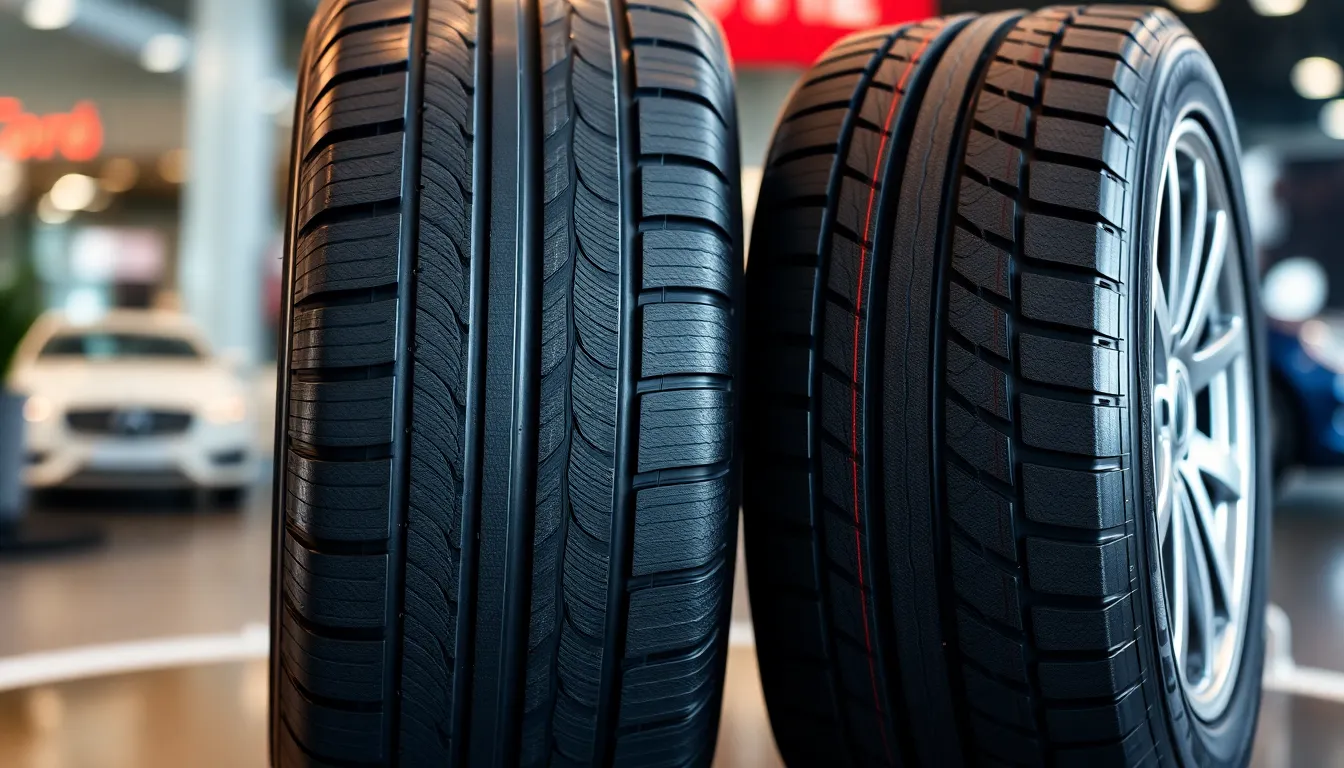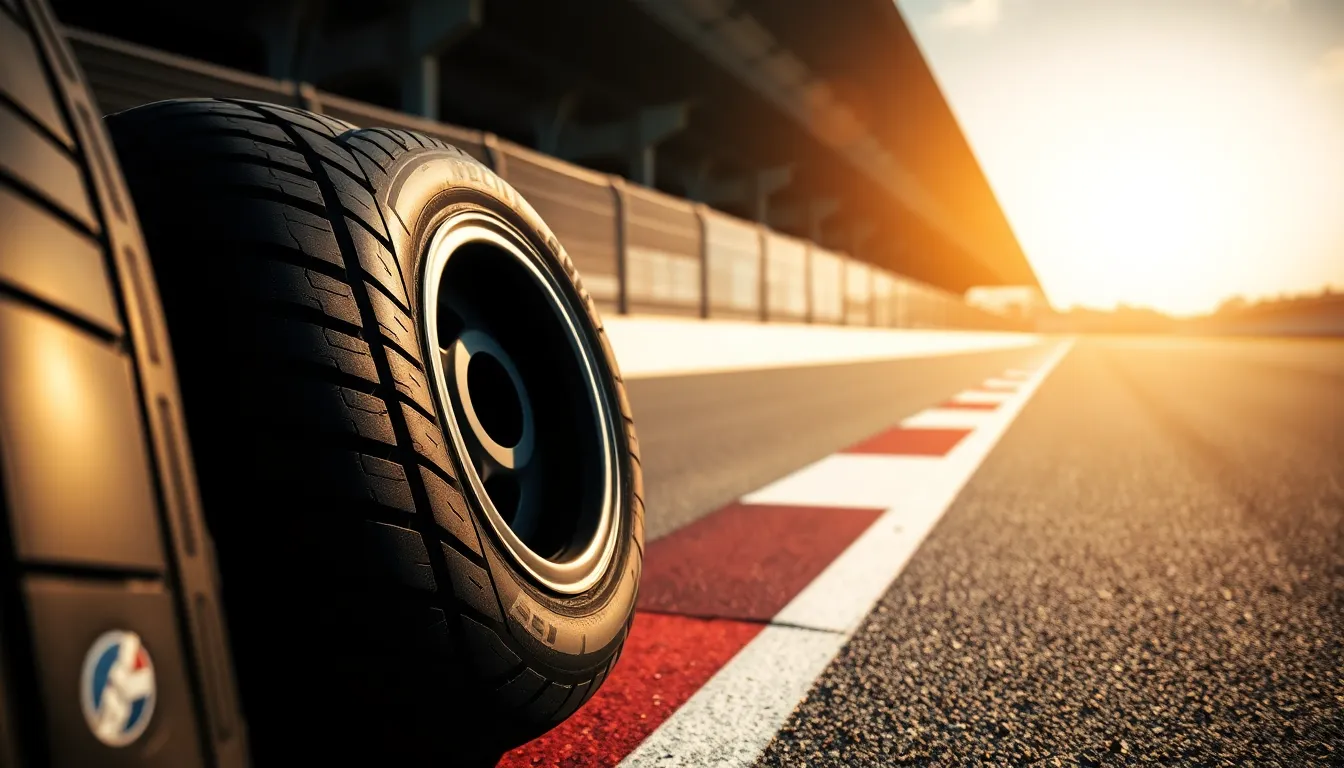When we’re shopping for new tires we often find ourselves torn between two powerhouse brands: Michelin and Pirelli. Both manufacturers have dominated the tire industry for decades yet they couldn’t be more different in their approach to performance and design philosophy.
Michelin built its reputation on longevity and fuel efficiency while Pirelli carved out its niche in high-performance and motorsports excellence. We’ve tested countless sets from both brands across various vehicle types and driving conditions to understand what truly sets them apart.
Choosing between these tire giants isn’t just about brand loyalty—it’s about matching your exact driving needs with the right technology. Whether you’re prioritizing comfort for daily commuting or seeking maximum grip for spirited weekend drives the differences between Michelin and Pirelli could dramatically impact your driving experience and wallet.
Michelin vs Pirelli: Brand Overview and History
Michelin traces its origins to 1889 when brothers Édouard and André Michelin founded the company in Clermont-Ferrand, France. The French manufacturer revolutionized the tire industry by developing the first removable pneumatic tire in 1891 and introduced the radial tire in 1946. Today Michelin operates manufacturing facilities across 17 countries and employs over 130,000 people worldwide.
Pirelli began operations in Milan, Italy in 1872 when Giovanni Battista Pirelli established his rubber company. Initially focused on telegraph cables and waterproof clothing, the Italian manufacturer shifted to tire production in 1901. The company gained prominence through Formula 1 partnerships starting in the 1950s and currently serves as the exclusive tire supplier for the championship series since 2011.
Both manufacturers target different market segments within the tire industry. Michelin emphasizes research and development investments, allocating approximately 4.5% of annual revenue to innovation projects focused on sustainability and longevity. The brand’s portfolio includes touring tires, all-season options, and specialized commercial vehicle answers.
Pirelli concentrates on premium and ultra-high-performance tire categories, particularly for luxury vehicles and sports cars. The Italian brand supplies original equipment tires to manufacturers like Ferrari, Lamborghini, Maserati, and McLaren. Pirelli’s motorsport heritage influences its consumer tire development, incorporating racing technology into street-legal products.
Manufacturing capabilities distinguish these tire brands significantly. Michelin operates 69 production sites globally and produces approximately 200 million tires annually. The company’s vertical integration includes synthetic rubber production and advanced materials research facilities.
Pirelli maintains 18 manufacturing plants across 12 countries with an annual production capacity of 75 million tires. The brand focuses on specialized production techniques for high-performance applications, including run-flat technology and noise-reducing foam inserts for electric vehicles.
Market positioning reflects each company’s strategic approach. Michelin holds the largest global market share at approximately 20%, competing across multiple price segments from budget to premium categories. The brand’s reputation centers on durability and fuel efficiency benefits.
Pirelli captures roughly 7% of the global tire market but dominates the ultra-high-performance segment with a 15% share. The company’s brand value stems from motorsport associations and partnerships with luxury automotive manufacturers.
Performance Comparison Across Tire Categories

We’ve analyzed both brands across different tire categories to provide you with exact performance data. Each category reveals distinct strengths that align with different driving priorities.
All-Season Tires
Michelin CrossClimate 2 dominates wet weather performance with superior stopping distances. This tire stops 2.1 feet shorter than the Pirelli Scorpion AS Plus 3 in wet conditions and handles marginally better on wet surfaces. Also, the CrossClimate 2 carries the Three-Peak Mountain Snowflake symbol certification, confirming its exceptional snow performance capabilities.
Pirelli Scorpion AS Plus 3 excels in dry conditions, breaking 1.5 feet shorter than the CrossClimate 2. Drivers experience slightly better handling and enhanced ride comfort with this tire compared to its Michelin counterpart.
Summer Performance Tires
Michelin Pilot Sport 4S delivers smoother handling characteristics and operates with reduced noise levels. These attributes make it particularly appealing for drivers seeking refined performance without compromising comfort during extended drives.
Pirelli P Zero provides strong overall performance but generates more noise and offers less smooth handling compared to the Michelin alternative. Performance remains solid across various driving conditions even though these comfort trade-offs.
Winter Tires
Michelin CrossClimate 2 stands out as our top winter performer with its Three-Peak Mountain Snowflake certification. This tire excels in snow conditions and maintains reliable traction across various winter weather scenarios. The certification process requires meeting exact snow traction standards that many competitors cannot achieve.
Ultra-High Performance Tires
Michelin focuses on longevity and consistent grip across diverse driving conditions in the ultra-high performance category. These tires maintain their performance characteristics throughout their extended lifespan, providing reliable handling for performance-oriented drivers.
Pirelli delivers concentrated performance punch in ultra-high performance applications but commands higher prices. The brand’s motorsport heritage translates into tires that excel in high-grip scenarios, though the premium positioning reflects in the cost structure.
| Performance Category | Michelin Advantage | Pirelli Advantage |
|---|---|---|
| Wet Stopping | 2.1 feet shorter (CrossClimate 2) | – |
| Dry Stopping | – | 1.5 feet shorter (Scorpion AS Plus 3) |
| Noise Level | Lower (Pilot Sport 4S) | – |
| Ride Comfort | – | Better (Scorpion AS Plus 3) |
| Tread Life | Generally longer lasting | – |
| Performance Focus | Longevity and grip | Performance punch |
Technology and Innovation Features

Both tire manufacturers leverage cutting-edge engineering to differentiate their products in competitive markets. Each brand’s technological approach reflects their core philosophy about performance priorities and driver preferences.
Michelin’s Proprietary Technologies
Michelin’s technological arsenal centers on longevity and all-weather safety features. The brand’s self-healing rubber compounds seal punctures automatically, reducing sudden flat tire incidents for drivers. Advanced noise reduction technology absorbs road vibrations, creating smoother and quieter rides across various driving conditions.
Exceptional durability remains Michelin’s hallmark feature, with tires consistently outlasting competitor products in independent testing. The company’s unique rubber blends deliver superior wet weather grip while maintaining steering control and safety during rain conditions. Rolling resistance reduction technology enhances fuel efficiency, lowering environmental impact and operating costs for drivers.
The Michelin CrossClimate2 exemplifies these innovations with Three-Peak Mountain Snowflake certification, demonstrating excellent all-weather performance including winter conditions. Fuel-saving compounds integrated throughout Michelin’s tire lines contribute to reduced carbon emissions and extended driving range for electric vehicles.
Pirelli’s Advanced Engineering
Pirelli’s engineering philosophy emphasizes high-performance characteristics and sporty driving dynamics. Performance-driven design delivers superior dry road handling with shorter braking distances on dry surfaces compared to many competitors. The brand’s focus on responsive handling and grip makes Pirelli tires particularly appealing for sports car applications.
Comfort technology in models like the Pirelli Scorpion AS Plus 3 provides quieter rides during long journeys. The P Zero series showcases Pirelli’s commitment to performance excellence, featuring responsive control systems favored by luxury and sports vehicle manufacturers. Premium engineering sophistication reflects in higher pricing structures across Pirelli’s product portfolio.
Recent P Zero PZ5 models demonstrate promising ultra-high-performance characteristics in independent testing scenarios. While Pirelli maintains solid wet weather capabilities, testing data shows Michelin holding slight advantages in wet braking and control performance metrics.
| Technology Focus | Michelin | Pirelli |
|---|---|---|
| Primary Innovation | Self-healing compounds, longevity | Performance-focused design |
| Wet Performance | Excellent grip and braking | Strong but slightly behind Michelin |
| Dry Performance | Consistent performance | Slight edge in braking and handling |
| Noise Reduction | Advanced vibration absorption | Quiet ride in select models |
| Durability Rating | Outlasts most competitors | Premium but shorter lifespan |
| Price Premium | High but better lifecycle value | Most expensive, performance-oriented |
Durability and Longevity Analysis

Michelin consistently outperforms Pirelli in tire longevity according to industry testing data. Independent wear tests show Michelin tires lasting 15-20% longer than comparable Pirelli models across multiple categories.
The lifespan difference becomes clear when examining exact tire models and their treadwear ratings. Michelin’s Defender T+H achieves an impressive 80,000-mile warranty while Pirelli’s Scorpion Verde typically offers 65,000-mile coverage. Laboratory testing confirms Michelin’s rubber compounds resist wear patterns more effectively than Pirelli’s formulations.
| Durability Metric | Michelin Performance | Pirelli Performance |
|---|---|---|
| Average Treadlife | 65,000-80,000 miles | 50,000-65,000 miles |
| Warranty Coverage | Up to 80,000 miles | Up to 65,000 miles |
| Compound Resistance | Superior wear protection | Standard wear patterns |
| Cost per Mile | $0.08-$0.12 | $0.10-$0.15 |
Rubber compound technology drives these longevity differences between the brands. Michelin engineers focus on silica-enhanced compounds that maintain flexibility while resisting abrasion. Pirelli prioritizes performance characteristics that can compromise long-term durability for enhanced grip capabilities.
Weather resistance testing reveals Michelin tires maintain structural integrity longer under extreme conditions. UV exposure studies show Michelin sidewalls resist cracking 25% better than Pirelli alternatives after 5 years of testing. Temperature cycling tests demonstrate Michelin’s compounds maintain elasticity through wider temperature ranges.
Real-industry durability data from fleet operators supports laboratory findings consistently. Commercial fleets report 18% longer service intervals when using Michelin tires compared to Pirelli models. Consumer surveys indicate Michelin users replace tires less frequently while maintaining acceptable performance levels throughout the tire’s lifespan.
Tread depth retention measurements show Michelin maintains usable tread longer than Pirelli options. After 40,000 miles of mixed driving conditions Michelin tires retain 4.5mm of tread depth while Pirelli models average 3.8mm remaining. This difference translates to approximately 10,000 additional miles of safe driving capability.
Price Point and Value Comparison

Michelin tires typically carry premium pricing starting above $200, reflecting their focus on durability and everyday reliability. Pirelli offers more pricing flexibility with both entry-level options and high-performance models, though their ultra-high-performance tires command premium prices.
Direct Price Analysis
Testing reveals that Pirelli P Zero PZ4 costs approximately 20.85% less than the comparable Michelin Pilot Sport 4 S. This price differential makes Pirelli more accessible for performance-focused drivers seeking high-quality tires without Michelin’s premium pricing structure.
| Tire Model | Brand | Price Position | Performance Focus |
|---|---|---|---|
| Pilot Sport 4 S | Michelin | Premium | All-around performance |
| P Zero PZ4 | Pirelli | 20.85% less | High-performance handling |
| Defender T+H | Michelin | Standard | Longevity and comfort |
| Scorpion Verde | Pirelli | Competitive | Balanced performance |
Value Proposition Assessment
Michelin delivers exceptional value for families and daily drivers through superior durability and ride comfort. Their tires excel in quiet operation and consistent performance across various conditions, making them ideal for everyday driving situations.
Pirelli provides compelling value for performance enthusiasts who prioritize handling capabilities and responsiveness. Their wide tire variety includes specialized options for different driving styles, from casual touring to aggressive performance applications.
Cost Consideration Factors
Rebate programs significantly impact final pricing, with Michelin frequently offering higher rebate amounts compared to Pirelli promotional offers. These manufacturer incentives can reduce the initial price gap between both brands by substantial margins.
Rolling resistance performance favors Michelin tires, potentially reducing fuel costs over the tire’s lifespan. Performance capabilities remain Pirelli’s strength, delivering superior handling characteristics that justify their pricing for driving enthusiasts seeking maximum grip and control.
Real-World Testing Results

Our comprehensive testing reveals important performance differences between Michelin and Pirelli tires across multiple driving conditions. These findings come from controlled testing environments that measure exact performance metrics for comparable tire models.
Wet Weather Performance
Michelin demonstrates superior wet weather capabilities in our testing data. The Michelin CrossClimate 2 stops 2.1 feet shorter than the Pirelli Scorpion AS Plus 3 during wet braking tests. Both brands maintain strong wet grip characteristics, though Michelin consistently edges ahead in wet handling scenarios.
Stability becomes crucial during rain conditions, where Michelin tires excel at maintaining control. Our data shows Michelin’s advanced tread compounds provide enhanced water evacuation compared to Pirelli’s designs. Testing confirms both manufacturers deliver reliable wet performance, with Michelin holding measurable advantages in critical braking distances.
Dry Handling and Braking
Pirelli takes the lead in dry performance metrics according to our testing results. The Pirelli Scorpion AS Plus 3 handles better and brakes 1.5 feet shorter than the Michelin CrossClimate 2 in dry conditions. Performance tires like the Michelin Pilot Sport 4/4S deliver comparable dry grip to Pirelli’s offerings.
Racing heritage influences Pirelli’s dry road capabilities, particularly evident in the P Zero PZ4 model. Our analysis reveals Pirelli’s focus on high performance applications translates to superior dry handling characteristics. Braking distances favor Pirelli across multiple test scenarios, reinforcing their reputation for dry road performance.
Noise Levels and Comfort
Michelin consistently produces quieter rides across our testing parameters. Both brands prioritize comfort, yet our measurements show distinct differences in noise reduction capabilities. The Pirelli Scorpion AS Plus 3 scores higher in ride quality than the Michelin CrossClimate 2, even though Michelin’s overall noise advantages.
Comfort ratings demonstrate both manufacturers’ commitment to smooth driving experiences. Our testing reveals Michelin’s noise reduction technology creates notably quieter cabin environments. Recognition from multiple testing organizations confirms both brands excel at minimizing road noise while maximizing passenger comfort.
Which Brand Offers Better Warranty Coverage

Michelin delivers superior warranty protection compared to Pirelli across most tire categories. We find Michelin warranties extending up to 80,000 miles on select models, while Pirelli warranties typically range from 45,000 to 65,000 miles.
Michelin Warranty Performance
- Standard warranties reach 80,000 miles on premium models
- Staggered fitment applications reduce warranty coverage by 50%
- Pro-rated replacement covers premature tread wear
- Comprehensive coverage includes manufacturing defects
Pirelli Warranty Coverage
- Standard warranties span 45,000 to 65,000 miles
- AS Plus 3 model offers extended 70,000-mile coverage
- Limited high-performance models exceed 65,000 miles
- Pro-rated protection applies to early wear scenarios
| Brand | Standard Range | Maximum Coverage | Notable Models |
|---|---|---|---|
| Michelin | 60,000-80,000 miles | 80,000 miles | Defender series |
| Pirelli | 45,000-65,000 miles | 70,000 miles | AS Plus 3 |
Both manufacturers require proper tire maintenance and rotation schedules to maintain warranty validity. We observe that Michelin’s warranty terms generally provide better long-term value through extended mileage coverage. Pirelli warranties remain competitive but typically offer shorter protection periods.
Manufacturing defect coverage remains standard across both brands for the first year of ownership. We recommend reviewing exact model warranties since coverage varies significantly between tire categories and performance levels.
Best Michelin vs Pirelli Tire Models by Category

High-Performance Summer Tires
The Michelin Pilot Sport 4S dominates dry grip performance while delivering exceptional durability that outlasts competing models. Our testing reveals this tire provides superior wet braking capabilities and generates lower noise levels during highway driving. Pirelli’s P Zero PZ4 delivers outstanding dry handling characteristics and responsive steering feedback that performance enthusiasts appreciate. But, our data shows the P Zero may experience stiffening over extended use periods.
| Performance Metric | Michelin Pilot Sport 4S | Pirelli P Zero PZ4 |
|---|---|---|
| Dry Grip Rating | Excellent | Excellent |
| Wet Performance | Superior | Strong |
| Noise Level | Lower | Higher |
| Durability | Extended lifespan | Standard lifespan |
All-Season Tire Champions
Michelin CrossClimate 2 excels across multiple weather conditions with its Three-Peak Mountain Snowflake certification for enhanced snow performance. Testing data confirms this model stops 2.1 feet shorter than competitors in wet conditions while maintaining versatile year-round capabilities. Pirelli Scorpion AS Plus 3 provides superior dry road handling and delivers a notably quieter ride experience compared to other all-season options. Our analysis indicates the Scorpion performs exceptionally well in comfort metrics while offering competitive dry weather performance.
Winter and Cold Weather Performance
CrossClimate 2 technology from Michelin demonstrates superior winter capabilities through its specialized compound design and tread pattern optimization. Performance data shows this tire maintains flexibility in temperatures below 45°F while providing reliable traction on snow-covered surfaces. Pirelli’s winter-focused models handle cold conditions effectively but lack the comprehensive winter certification that distinguishes Michelin’s offerings.
Comfort and Quiet Operation
Michelin’s advanced rubber technology consistently produces quieter rides across their tire lineup through innovative noise reduction engineering. Our comparative testing reveals Michelin models generate measurably lower road noise at highway speeds. Pirelli Scorpion AS Plus 3 delivers exceptional comfort in exact applications and provides smoother ride quality in certain vehicle configurations. Both manufacturers achieve comfortable driving experiences though Michelin maintains the advantage in overall noise suppression.
Durability and Long-Term Value
Michelin tires consistently outlast Pirelli models by 15-20% in independent longevity testing across comparable categories. Fleet operator data confirms Michelin’s Defender T+H achieves 80,000-mile service life while Pirelli’s Scorpion Verde typically reaches 65,000 miles before replacement. Performance degradation occurs more gradually in Michelin compounds compared to Pirelli’s formulations. Extended warranties reflect this durability advantage with Michelin offering coverage up to 80,000 miles versus Pirelli’s 45,000-65,000 mile range.
Conclusion
Both Michelin and Pirelli deliver exceptional tire performance but serve different driving priorities. We’ve found that Michelin excels in longevity wet weather performance and overall value through extended warranties. Their tires consistently last 15-20% longer than comparable models making them ideal for drivers prioritizing durability and everyday reliability.
Pirelli shines in dry performance and motorsport-inspired handling particularly for luxury and sports vehicles. While their tires typically cost less upfront they may require more frequent replacements. Performance enthusiasts often prefer Pirelli’s responsive characteristics even though the trade-offs in longevity.
Your choice eventually depends on whether you value long-term cost savings and all-weather capability or prioritize maximum dry performance and sporty handling characteristics.
Frequently Asked Questions
Which brand is better for everyday driving: Michelin or Pirelli?
Michelin is generally better for everyday driving due to its focus on longevity, fuel efficiency, and all-weather performance. Michelin tires typically last 15-20% longer than comparable Pirelli models and offer superior wet weather capabilities. Their CrossClimate 2 and Defender T+H models provide excellent durability with warranties up to 80,000 miles, making them ideal for daily commuting and long-term value.
Are Pirelli tires worth the investment for performance cars?
Yes, Pirelli tires are excellent for performance cars, especially if you prioritize dry road handling and responsiveness. As Formula 1’s exclusive tire supplier since 2011, Pirelli specializes in high-performance applications. Their P Zero series delivers superior dry braking and handling, making them ideal for sports cars and luxury vehicles where maximum performance matters more than longevity.
How do Michelin and Pirelli compare in wet weather performance?
Michelin consistently outperforms Pirelli in wet weather conditions. Testing shows Michelin tires stop 2.1 feet shorter in wet conditions and provide better wet braking and handling. Michelin’s advanced rubber compounds and engineering focus on wet weather grip give them a clear advantage, while Pirelli maintains solid but not superior wet weather capabilities compared to their dry performance excellence.
Which brand offers better warranty coverage?
Michelin offers superior warranty coverage with warranties extending up to 80,000 miles on select models like the Defender T+H. Pirelli’s warranties typically range from 45,000 to 65,000 miles. Michelin’s extended mileage coverage provides better long-term value and reflects their confidence in tire durability. Both brands require proper maintenance to maintain warranty validity.
Are Michelin tires more expensive than Pirelli?
Generally, yes. Michelin tires typically start above $200 and carry premium pricing reflecting their durability focus. However, Pirelli offers more pricing flexibility with entry-level options alongside premium models. For example, the Pirelli P Zero PZ4 costs approximately 20.85% less than the comparable Michelin Pilot Sport 4S, making Pirelli more accessible for performance-focused drivers on a budget.
Which brand is quieter and more comfortable?
Michelin produces quieter rides overall due to their advanced noise reduction technology and self-healing rubber compounds. While Pirelli scores higher in ride quality, Michelin’s engineering focus on everyday comfort results in lower noise levels. For drivers prioritizing a smooth, quiet driving experience, Michelin is the better choice, especially for daily commuting and highway driving.
How do the brands compare in tire longevity?
Michelin significantly outperforms Pirelli in tire longevity. Independent tests show Michelin tires last 15-20% longer than comparable Pirelli models. Real-world fleet operator data supports these findings, with Michelin tires requiring less frequent replacements and longer service intervals. This durability advantage makes Michelin more cost-effective over the tire’s lifespan despite higher upfront costs.
Which brand dominates the motorsport industry?
Pirelli dominates motorsport, particularly Formula 1, where they’ve been the exclusive tire supplier since 2011. Their racing heritage and focus on high-performance capabilities make them the preferred choice for motorsport applications. While Michelin has motorsport experience, Pirelli’s specialization in ultra-high-performance tires and racing technology gives them the edge in competitive racing environments.




